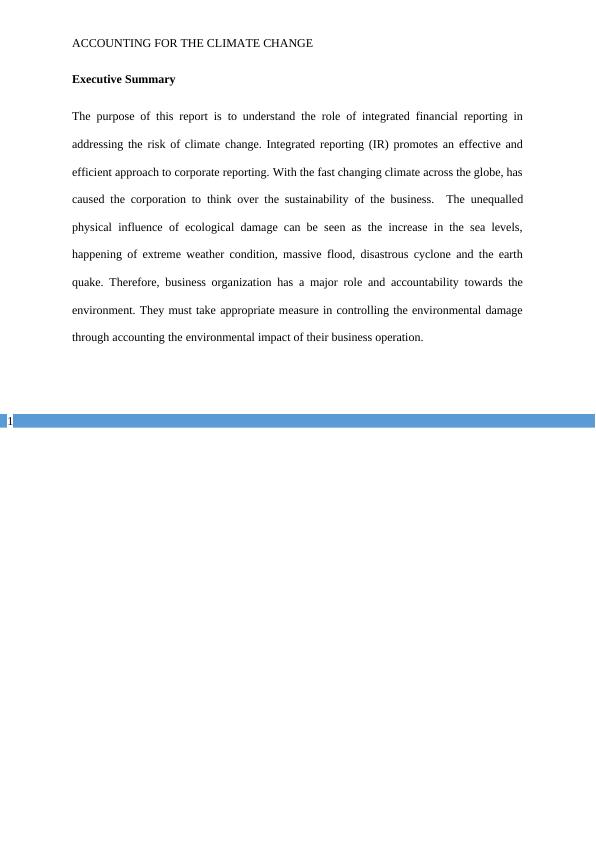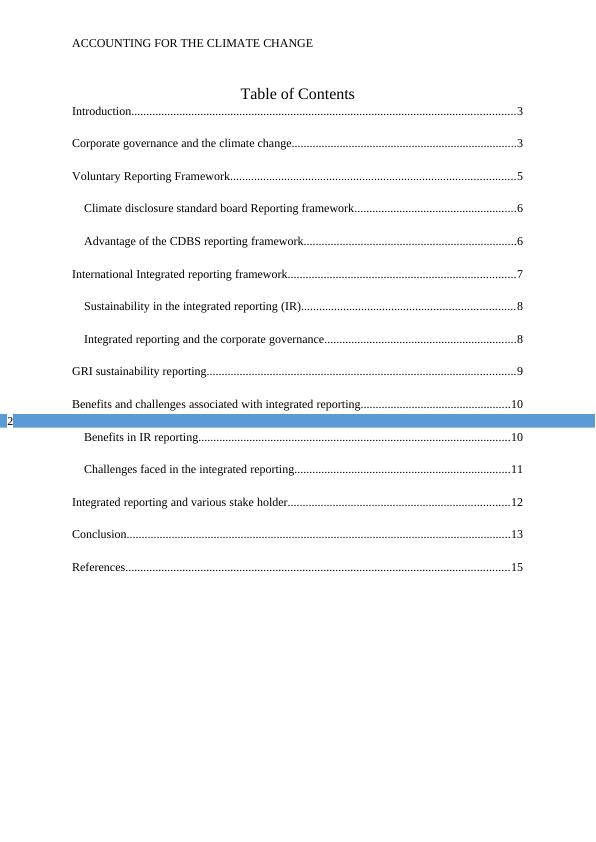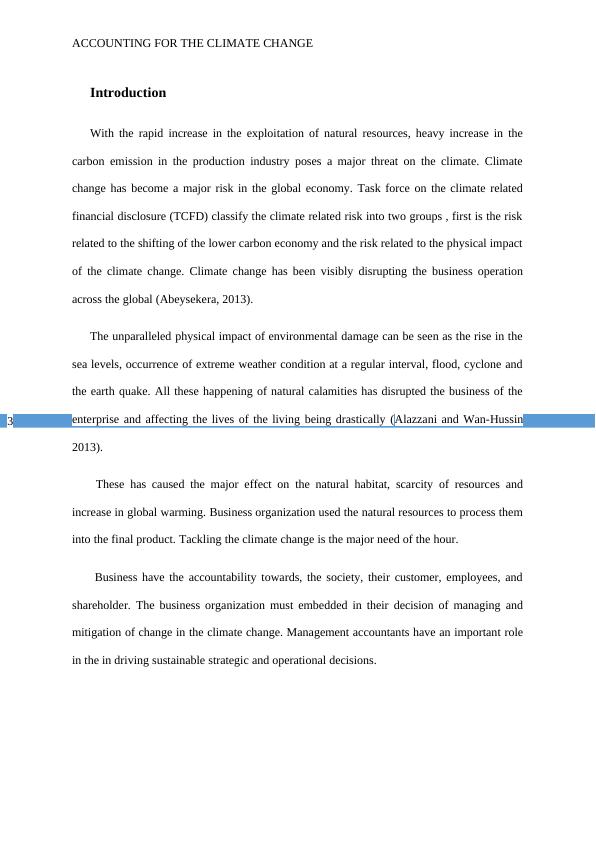Accounting for Climate Change
Write a report for Chief Executive Officers of an Australian listed company explaining how company reporting might best address environmental/climate change risk.
18 Pages3820 Words108 Views
Added on 2022-12-15
About This Document
This report explores the role of integrated financial reporting in addressing the risk of climate change. It discusses the impact of climate change on business operations and the accountability of organizations towards the environment. The report also covers voluntary reporting frameworks, the climate disclosure standard board reporting framework, and the benefits and challenges associated with integrated reporting.
Accounting for Climate Change
Write a report for Chief Executive Officers of an Australian listed company explaining how company reporting might best address environmental/climate change risk.
Added on 2022-12-15
ShareRelated Documents
End of preview
Want to access all the pages? Upload your documents or become a member.
Impact of Climate Change on Business and Ways to Reduce Carbon Footprints
|6
|1358
|223
Climate Change and Its Impact on Businesses: Steps to Reduce Carbon Footprint
|6
|1340
|350
Building A Sustainable Organization Individual Report
|6
|1344
|497
Impact of Climate Change on Businesses and Strategies to Reduce Carbon Footprint
|6
|1475
|233
To what extent is climate change the result of human activities
|6
|1411
|489
Impact of Climatic Change on Businesses and Steps to Reduce Carbon Footprint
|7
|1331
|321




